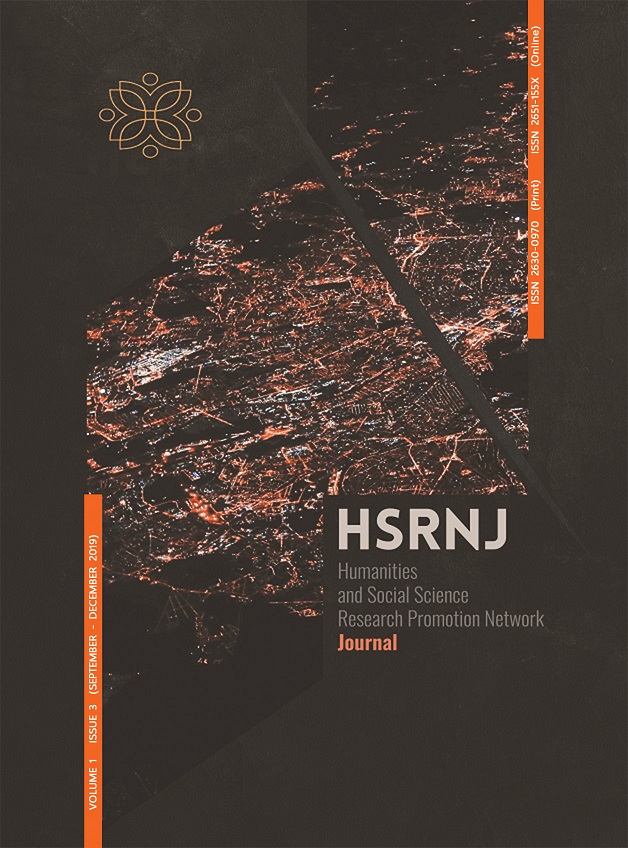การรับรู้และการตระหนักถึงความปลอดภัยในการให้บริการของสายการบิน ที่มีผลต่อการตัดสินใจเลือกใช้บริการของสายการบิน: กรณีศึกษา บริษัทการบินไทย จำกัด (มหาชน)
คำสำคัญ:
การรับรู้และการตระหนัก, ความปลอดภัยในการให้บริการ, บริษัทการบินไทย, การตัดสินใจเลือกใช้บริการสายการบินบทคัดย่อ
การวิจัยครั้งนี้มีวัตถุประสงค์เพื่อ 1) ศึกษาปัจจัยด้านประชากรศาสตร์ และปัจจัยการรับรู้และตระหนักถึงความปลอดภัยในการให้บริการ และการตัดสินใจเลือกใช้บริการของผู้ใช้บริการสายการบินไทย 2) เปรียบเทียบการรับรู้และตระหนักถึงความปลอดภัยของผู้ใช้บริการสายการบินไทย และการตัดสินใจเลือกใช้บริการของผู้ใช้บริการสายการบินไทย โดยจำแนกตามปัจจัยด้านประชากรศาสตร์ และ 3) ศึกษาอิทธิพลของปัจจัยการรับรู้และตระหนักถึงความปลอดภัยที่มีผลต่อการตัดสินใจเลือกใช้บริการของสายการบินไทย กลุ่มตัวอย่างที่ใช้ในการวิจัยครั้งนี้เป็นผู้โดยสารที่ใช้บริการสายการบินไทย ที่อาศัยอยู่ในเขตกรุงเทพมหานครและปริมณฑล จำนวน 380 คน โดยใช้แบบสอบถามเป็นเครื่องมือที่ใช้ในการเก็บรวบรวมข้อมูลด้วยวิธีการสุ่มตัวอย่างแบบตามความสะดวก สถิติที่ใช้ในการวิเคราะห์ข้อมูล ได้แก่ สถิติเชิงพรรณนา ซึ่งประกอบด้วยค่าความถี่ ค่าร้อยละ ค่าเฉลี่ย และค่าเบี่ยงเบนมาตรฐาน และสถิติเชิงอนุมานประกอบด้วย การเปรียบเทียบค่าเฉลี่ย การวิเคราะห์ความแปรปรวนทางเดียว และการวิเคราะห์ถดถอยพหุคูณแบบ All Enter ที่นัยสำคัญทางสถิติที่ระดับ .05
ผลการศึกษา พบว่า ผู้โดยสารที่มีสถานภาพสมรส ระดับการศึกษา รายได้เฉลี่ยต่อเดือน และประเภทการเดินทางต่างกันมีผลต่อการรับรู้และตระหนักความปลอดภัยแตกต่างกัน ในขณะที่ผู้โดยสารที่มีสถานภาพสมรส ระดับการศึกษา และรายได้เฉลี่ยต่อเดือนต่างกันมีผลต่อการตัดสินใจเลือกใช้บริการของสายการบินไทยแตกต่างกัน นอกจากนี้ ปัจจัยการรับรู้และตระหนักถึงความปลอดภัยมีอิทธิพลต่อการตัดสินใจเลือกใช้บริการของสายการบินไทย โดยเฉพาะอย่างปัจจัยการรับรู้และตระหนักถึงความปลอดภัยด้านการบริการบนเครื่องบินอย่างมีนัยสำคัญที่ระดับ .05
เอกสารอ้างอิง
กฤตยา อรรถนาถ และเสกสรร สุทธิสงค์. (2558). พฤติกรรมของผู้โดยสารที่ใช้บริการออนไลน์กับสายการบินนกแอร์. วารสารวิชาการมหาวิทยาลัยอีสเทิร์นเอเชีย, 9(3), 55-71
กฤษดา เชียรวัฒนสุข และศรากุล สุโคตรพรหมมี. (2559). การวิเคราะห์เพื่อจำแนกกลุ่มลูกค้าผู้ใช้บริการสายการบินต้นทุนตํ่าโดยใช้ปัจจัยส่วนประสมการตลาดบริการ (7Ps). วารสารบริหารธุรกิจเทคโนโลยีมหานคร, 13(1), 92-109
เจนจิรา นาทองคำ และสุดาพร กุณฑลบุตร. (2559). อิทธิพลของปัจจัยทางการตลาดต่อความตั้งใจในการใช้บริการซ้ำของสายการบินต้นทุนต่ำ. วารสารมนุษยศาสตร์และสังคมศาสตร์ มหาวิทยาลัยราชพฤกษ์, 3(3). 50-61
ธฤติมา อัญญะพรสุข. (2559). ปัจจัยและกระบวนการตัดสินใจเลือกเดินทางมาท่องเที่ยวประเทศไทยของนักท่องเที่ยววัยสูงอายุชาวยุโรป. วารสารวิชาการ มทร. สุวรรณภูมิ, 1(1). 29-42
บริษัท การบินไทย จำกัด มหาชน. (2556). รายงานประจำปี 2556. เข้าถึงเมื่อ 23 กรกฎาคม 2561, จาก http://www.56-1.com/reports/THAI/THAI_13AR_th.pdf
พรทิพย์ บุญญาณ และ กิตติพงษ์ โสภณธรรมภาณ. (2560). ระดับการรับรู้การสื่อสารการตลาดเชิงบูรณาการต่อผลิตภัณฑ์โทรศัพท์สมาร์ทโฟน ของผู้ให้บริการระบบโทรศัพท์เคลื่อนที่. วารสารวิชาการ มทร. สุวรรณภูมิ, 2(1), 1-15
พูลภัทร์ ชมจิตต์, วัฒนา มานนท์ และวราภรณ์ เต็มแก้ว. (2557). ปัจจัยที่มีผลต่อการตัดสินใจของกลุ่มเจนเนอเรชั่นวายกับการเลือกใช้บริการเดินทางระหว่างประเทศของสายการบินของไทย. วิทยาลัยบัณฑิตศึกษาการจัดการ มหาวิทยาลัยขอนแก่น, 8(2), 39-54
Akamavi, R. K., Mohamed, E., Pellmann, K., & Xu, Y. (2015). Key determinants of passenger loyalty in the low-cost airline business. Tourism management, 46, 528-545.
Best, W.J & Kahn, V.J. (2006). Research in Education (10th ed). Boston: Allyn & Bacon.
Brochu, L. (2003). Interpretive planning: The 5-M model for successful planning projects. InterpPress.
Chang, Y. H., & Liao, M. Y. (2009). The effect of aviation safety education on passenger cabin safety awareness. Safety science, 47(10), 1337-1345.
Chen, C. F., & Chen, S. C. (2012). Scale development of safety management system evaluation for the airline industry. Accident Analysis and Prevention, 47, 177-181.
Cochran, W. G. 1977. Sampling Techniques: 3d Ed. New York: Wiley.
Daberkow, S. G., & McBride, W. D. (2003). Farm and operator characteristics affecting the awareness and adoption of precision agriculture technologies in the US. Precision Agriculture, 4(2), 163-177.
Dev, S. S., & Qayyum, N. (2017). Major factors affecting students’ perception towards faculty evaluation of teaching (SET). Journal of Social Studies Education Research, 8(3), 149-167.
Dolnicar, S., Grabler, K., Grün, B., & Kulnig, A. (2011). Key drivers of airline loyalty. Tourism Management, 32(5), 1020-1026.
Dourish, P., & Bellotti, V. (1992, December). Awareness and coordination in shared workspaces. In Proceedings of the 1992 ACM conference on Computer-supported cooperative work, 107-114).
Graham, A. (2016). Airport strategies to gain competitive advantage. In Airport Competition (pp. 109-122). Routledge.
Hajiar, S. T. (2014). A statistical study to develop a reliable scale to evaluate instructors within higher institution. WSEAS Transactions on Mathematics, 13, 885-894
Han, H. (2013). Effects of in-flight ambience and space/function on air travelers' decision to select a low-cost airline. Tourism management, 37, 125-135.
Hsu, Y. L., & Liu, T. C. (2012). Structuring risk factors related to airline cabin safety. Journal of air transport management, 20, 54-56.
Jeeradist, T., Thawesaengskulthai, N., & Sangsuwan, T. (2016). Using TRIZ to enhance passengers' perceptions of an airline's image through service quality and safety. Journal of Air Transport Management, 53, 131-139.
Kilinç,i., Öncü, M. A., & Taşgit, Y. E. (2009). A study on the Competition Strategies Implemented in the Airline Companies in Turkey. Sosyal Ekonomik Araştırmalar Dergisi, 9(17), 173-185.
Koklic, M. K., Kukar-Kinney, M., & Vegelj, S. (2017). An investigation of customer satisfaction with low-cost and full-service airline companies. Journal of Business Research, 80, 188-196.
Kouabenan, D. R., Ngueutsa, R., & Mbaye, S. (2015). Safety climate, perceived risk, and involvement in safety management. Safety Science, 77, 72-79.
Liou, J. J., Yen, L., and Tzeng, G. H. (2008). Building an effective safety management system for airlines. Journal of Air Transport Management, 14(1), 20-26.
Majidi, A., Nedjat, S., Mohammadi, A., Jamshidi, E., & Majdzadeh, R. (2014). Impact of sanctions on Iranian airlines: how people in Iran feel about air travel safety?. International journal of disaster risk reduction, 10, 67-74.
Menard, S. (1995). Applied logistic regression analysis: Sage university series on quantitative applications in the social sciences.
Molin, E., Blangé, J., Cats, O., & Chorus, C. (2017). Willingness to pay for safety improvements in passenger air travel. Journal of Air Transport Management, 62, 165-175.
Nas, S. (2015). The Definitions of Safety and Security. Journal of ETA Maritime Science, 3(2), 53-54.
Neter, J., Wasserman, W. & Kutner, M. H. (1989). Applied Linear Regression Models. Homewood, IL: Irwin
Pourhosein, M. R., Kol, A. A. K., Vishkaii, B. M., & Jourshari, F. P. (2017). Investigate the Relationship between Institutional Ownership in Tehran Stock Exchange. International Journal of Economics and Financial Issues, 7(3), 276-285.
Qiong, O. U. (2017). A brief introduction to perception. Studies in Literature and Language, 15(4), 18-28.
Raghavan, S., & Rhoades, D. L. (2005). Revisiting the relationship between profitability and air carrier safety in the US airline industry. Journal of Air Transport Management, 11(4), 283-290.
Rajaguru, R. (2016). Role of value for money and service quality on behavioural intention: A study of full service and low cost airlines. Journal of Air Transport Management, 53, 114-122.
Siomkos, G. J. (2000). Managing airline disasters: the role of consumer safety perceptions and sense-making. Journal of Air Transport Management, 6(2), 101-108.
Waring, A. (1996). Safety management systems. Thomson Learning Emea.
Wicklund, R. A. (1975). Objective self-awareness. In Advances in experimental social psychology, 8, 233-275.
ดาวน์โหลด
เผยแพร่แล้ว
รูปแบบการอ้างอิง
ฉบับ
ประเภทบทความ
สัญญาอนุญาต
บทความที่ได้รับการตีพิมพ์เป็นลิขสิทธิ์ของ ผู้เขียน
ทัศนะและความคิดเห็นที่ปรากฏในบทความในวารสารเครือข่ายส่งเสริมการวิจัยทางมนุษยศาสตร์และสังคมศาสตร์จะถือเป็นความรับผิดชอบของผู้เขียนบทความนั้น และไม่ถือเป็นทัศนะและความรับผิดชอบของกองบรรณาธิการ








